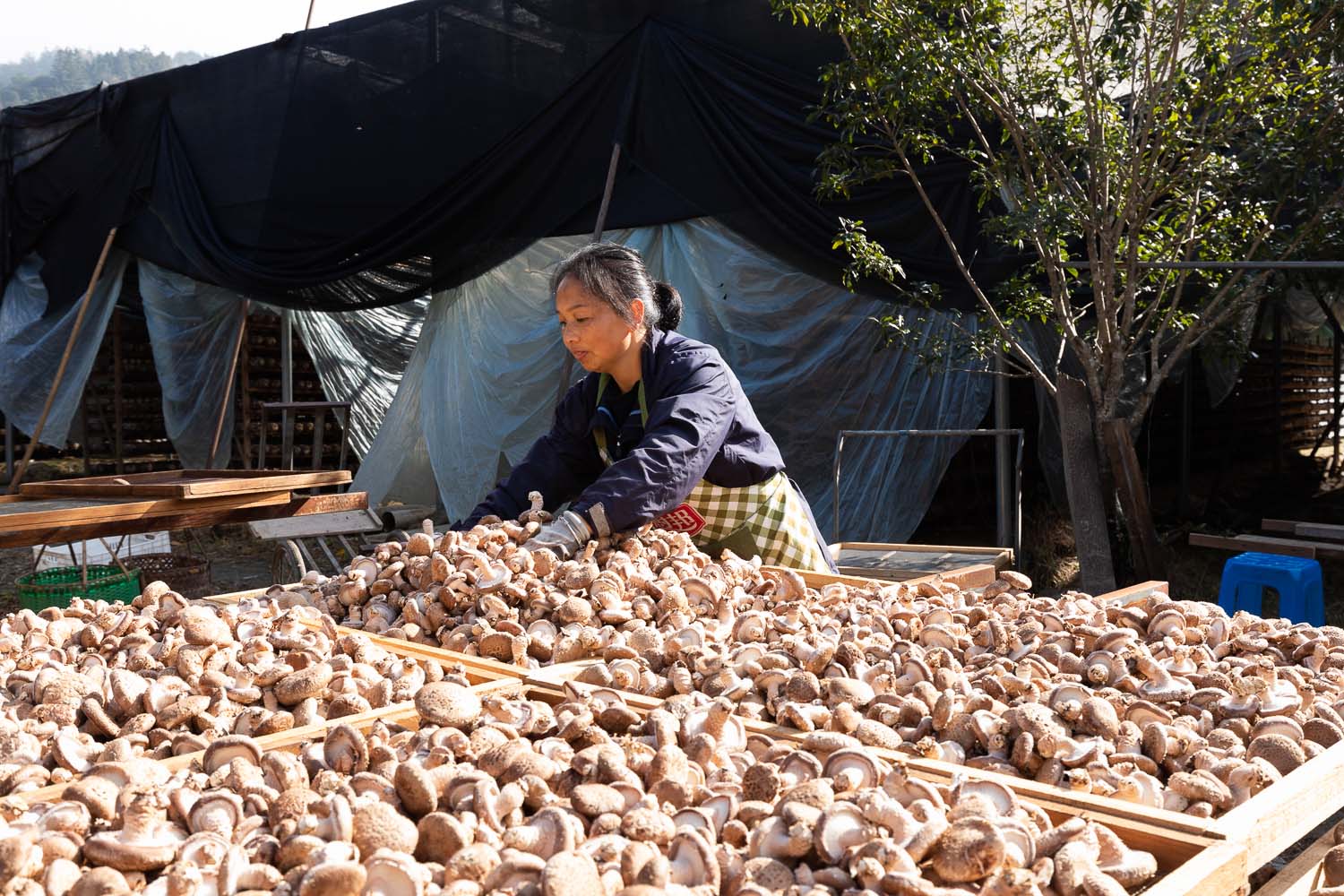What is the cost of growing mushrooms in North America and selling them as health product?
A prime example is the shiitake mushroom, since this is a major mushroom with many local growers, making it readily available on the fresh market in North America. Shiitake producers can provide a good example for our investigation of locally grown mushrooms as health product.
Let's start with a producer price; what the grower will receive. The producer price will certainly vary from state to state and depend on whether the producer sells directly to supermarkets, restaurants, wholesalers or maybe even sells directly to consumers. Another variable will be quality of the mushrooms and if they are organically certified. Because of these variables, I am utilizing statistics collected by the U.S. Department of Agriculture (USDA). These numbers are collected yearly and will be a consistent and reasonably accurate picture of producer prices. [1]
In 2007, the USDA producer price for fresh shiitake varied from $4 to $5.50 per pound. By 2013, the USDA producer price declined to an average of $3.33 per pound. If I take the $3.33 price and multiply it by 2.2, I reach $7.33 for a kilo of fresh shiitake.
So far so good. But health products are sold as a dry powder, usually in tablet or capsule form. We need to find the dry weight of a kilo of fresh shiitake. Mushrooms are commonly 90% water and most commercial shiitake would conform to this figure. So one kilo of fresh shiitake is only 100 grams of dry shiitake. To get a kilo price for dry shiitake we would multiple by 10, or 10 times 100 grams.
Multiplying $7.33 by 10 equals $73.33. This is the value of a kilo of dried shiitake as it compares to the price of the fresh product. One kilo of dried shiitake is a quite different product with a much higher price.
Now, this is where it becomes very difficult for the North American shiitake producer. The producer must get $73.33 for the dried kilogram. And that price is for bulk dried mushrooms; we haven't even added in the costs of drying the mushrooms and milling them to a powder that most health companies would require. Nor have we added the cost of testing the powder for microbes and heavy metals.
We can safely say that the shiitake mushroom producer needs to sell one kilo of dried shiitake for at least $75.00 to get the same price as his fresh product.
But now the producer has to compete with China, where shiitake growing originated and where 85% of the world's mushrooms are grown. A kilo of dried shiitake mushroom powder produced in China will cost approximately $15-20, depending on the variables we identified earlier. That is one fifth the price of the North American producer.
Is it economical? Does any producer have this kind of business? I have not seen any North American grown shiitake mushroom powders in the health and wellness marketplace.
Now, think about this. Mushrooms are often sold in extract form, which concentrates the medicinal compounds and allows a more potent powder to be put into the capsules. With a 4:1 extract, one only takes 2x500 mg capsules instead of the non extracted powder which would require 8 capsules.
If 4 kilos of dried mushrooms at $75.00 per kilo are concentrated into one kilo of extract, the cost would be as follows.
Dried shiitake: 4 kgs x $75 per kg = $300.
Production cost of the extract. = $75 per kg minimum
A 4:1 extract would have to be sold for a minimum of $375.00 per kilo.
This is at least 3 times more money than the most expensive wholesale price for shiitake 4:1 extracts.
Economically speaking, North American mushroom producers cannot grow and sell either a simple shiitake mushroom powder or a shiitake mushroom extract. There is no money to be made in this business. And that holds true for all medicinal mushrooms, not just shiitake.
However, North American companies are able to produce mycelium on grain in a laboratory and sell it for $20-25 per kilo. This process is simple and economical. This is the reason so much mycelium has been produced and sold in North America. It's all a matter of economics and has absolutely nothing to do with the actual functional value of the mycelium on grain product.
1. Mushrooms (August 2013) 15 USDA, National Agricultural Statistics Service

